The Ring of Brodgar, Orkney
The Ring of Brodgar is located on a small isthmus between the Lochs of Stenness and Harray and is a circle of 27 standing stones (which originally comprised of 60 stones). These stones are not as tall as the nearby Standing Stones of Stenness (varying in height from 2.1 metres to a maximum of 4.7 metres) but there are many more stones here.
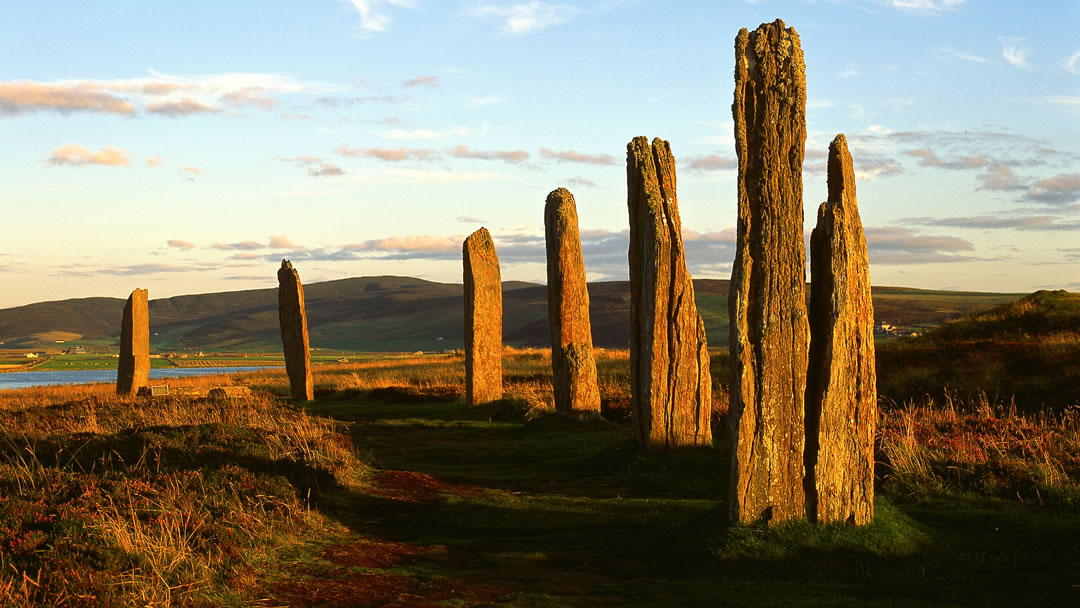
In 1854, in the first detailed account of the stone circle, there were only 13 erect stones. The Ring of Brodgar was taken into state care in 1906 and, two years later, most of the fallen stones were placed in what was thought to be their original sockets. Since then two stones have suffered lightning strikes, leaving 27 standing today.
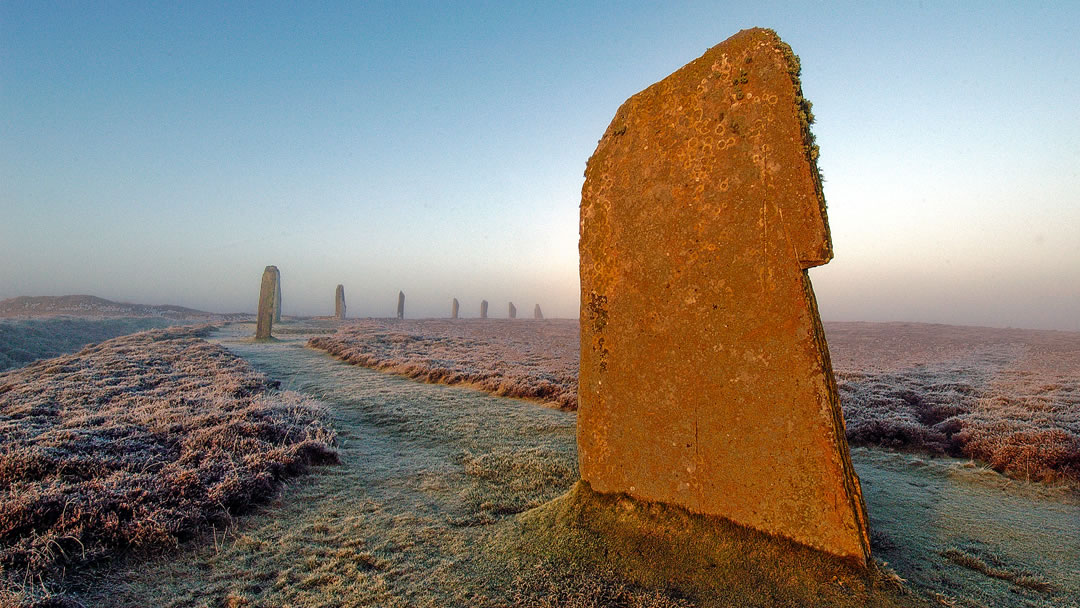
The Ring of Brodgar has resisted attempts to date it, however, it is thought to have been erected between 2500 BC and 2000 BC, and was the last of the great Neolithic monuments built. Calculations based on size and weight would indicate that the stones would have taken around 20 men to raise and ensure that they remained standing.
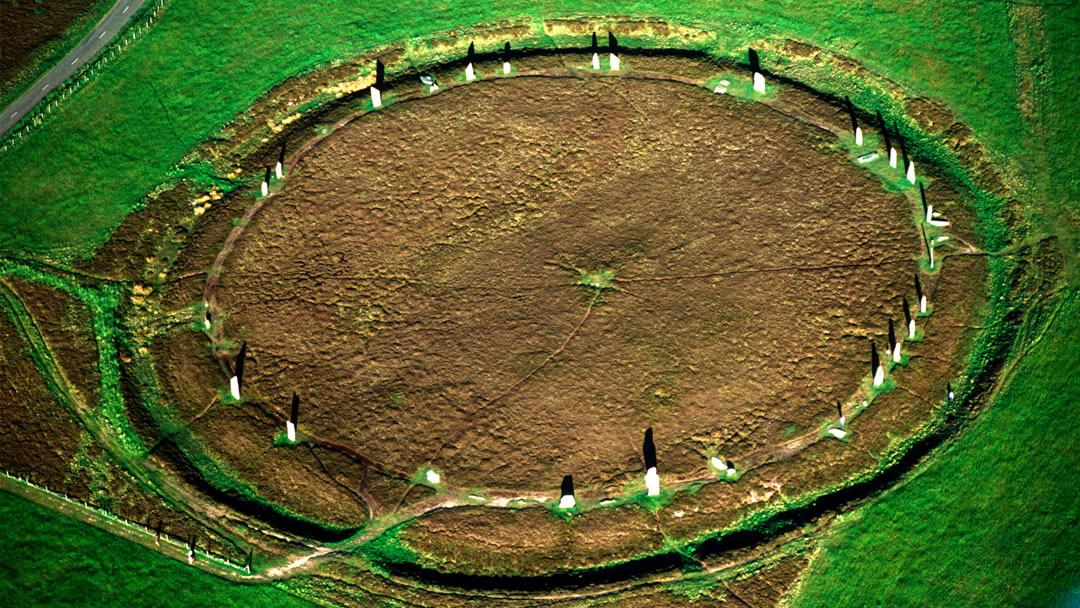
The stone circle is 104 metres in diameter (the third largest in the British Isles) and is set within a circular ditch up to 3 metres deep, 9 metres wide and 380 metres in circumference that was carved out of the solid sandstone bedrock by the neolithic people. There are no obvious stones inside the circle, but since the interior has never been excavated by archaeologists, the possibility remains that wooden structures may be present.
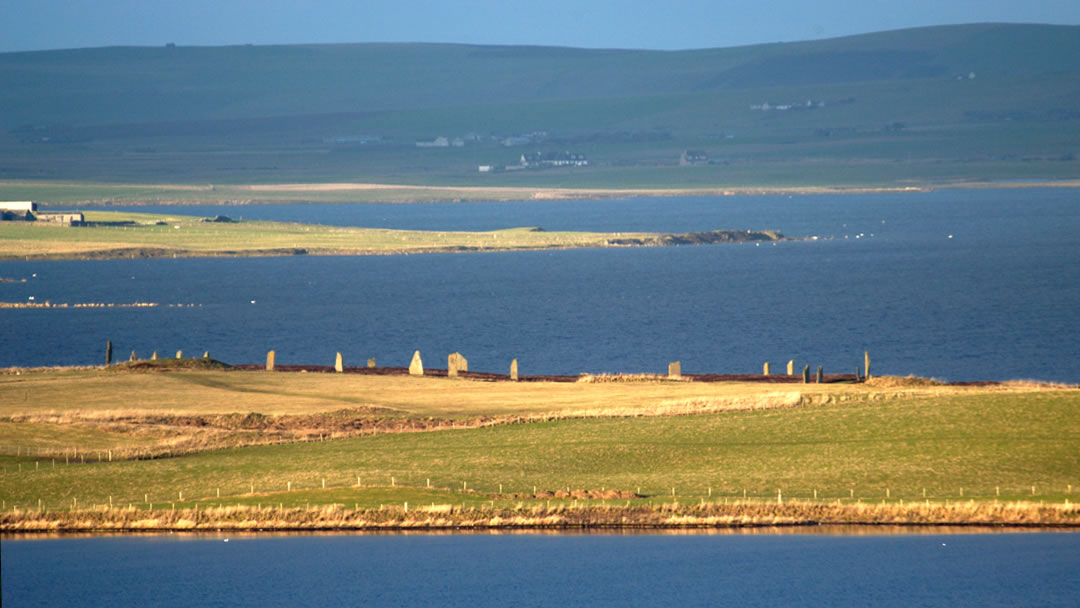
When the ring was erected, between 2500BC and 2000BC, the Stenness loch didn’t exist and the surrounding area was wet and marshy bogland. The sea only breached the landbridge at the Brigo’ Waithe in Stenness, filling the loch was salt water, around 1500BC – 500 to 1,000 years after the ring was built.
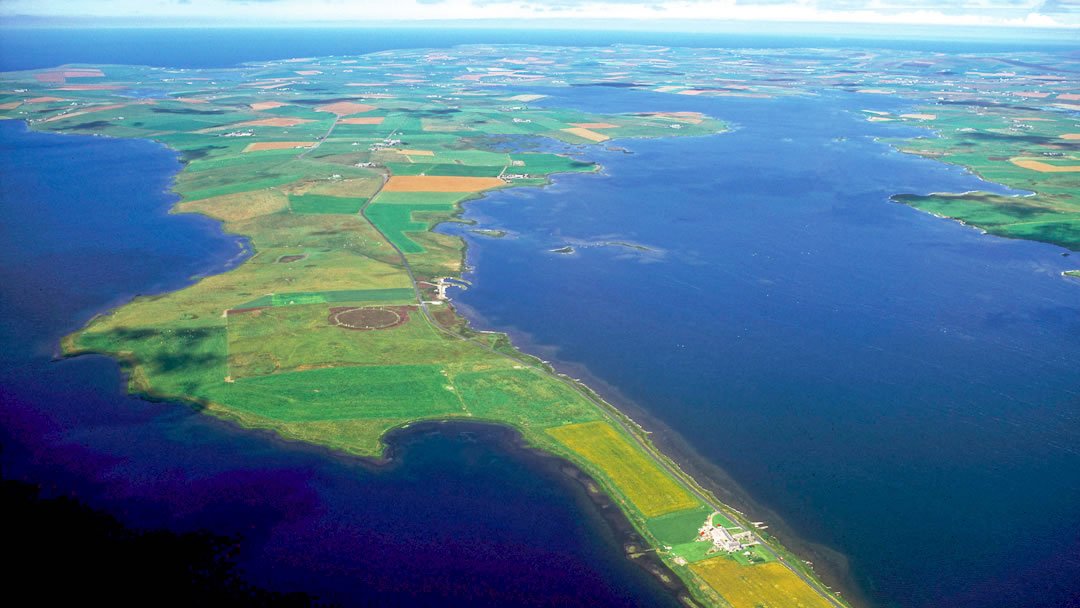
The most common question asked by visitors to the Ring of Brodgar is ‘What was it for?’ Just as churches today are used for various events – weddings, burials, worship, meeting places, entertainment – it is likely that the stone circles served a number of roles.
Many have wondered if the Ring of Brodgar was aligned to the sun, stars, moon or important buildings in the landscape.
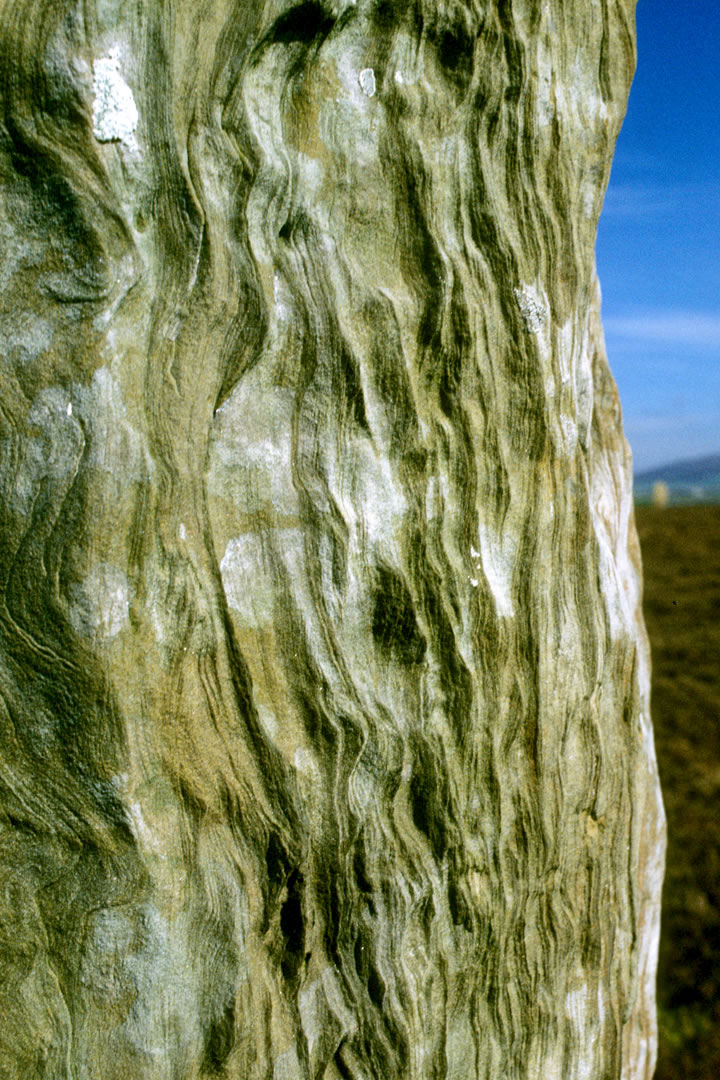
The Ring of Brodgar could have held 3,000 people, and it is possible that, given it’s later construction, the Ring of Brodgar was erected because the Standing Stones of Stenness grew too small to contain the increasing number of participants.
What is clear is that the stones were very important to the neolithic Orcadians. Certainly, within 2 square miles there are the two circle-henges, four chambered tombs, groups of standing stones, single stones, barrows, cairns, and mounds. The immediate area has also yielded a number of flint arrowheads and broken stone mace-heads from the Bronze Age.
